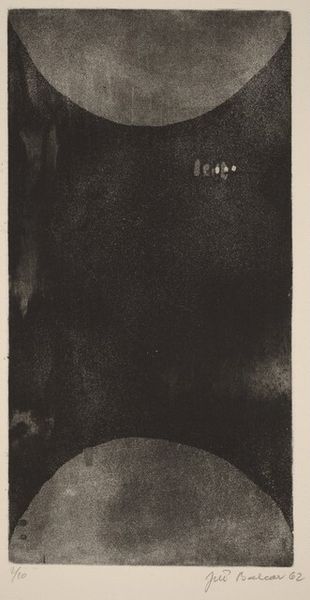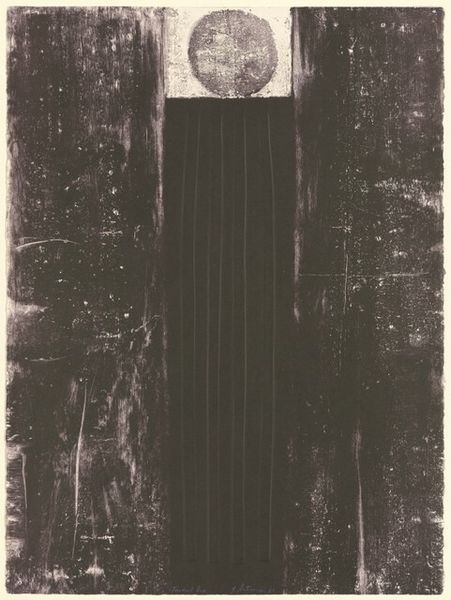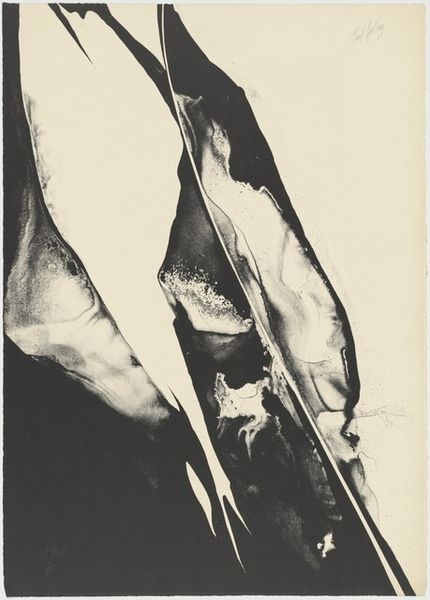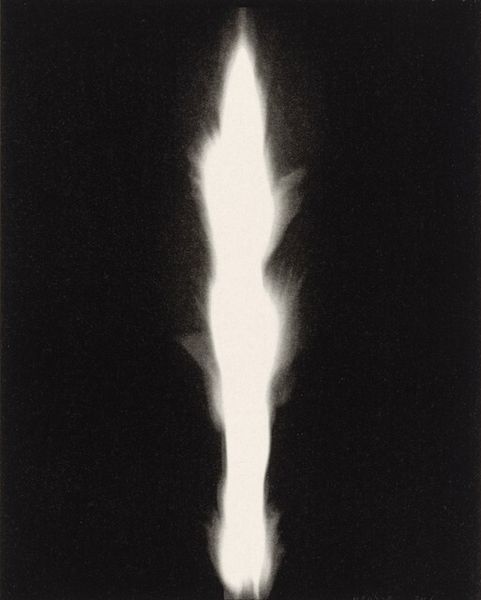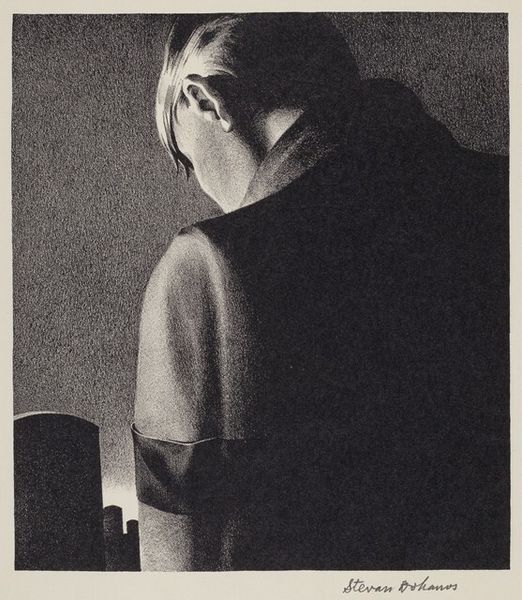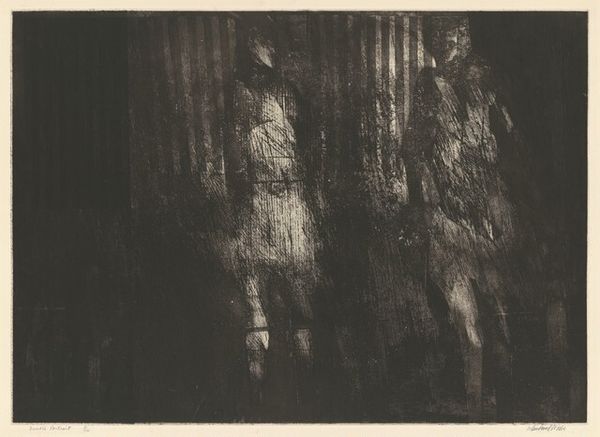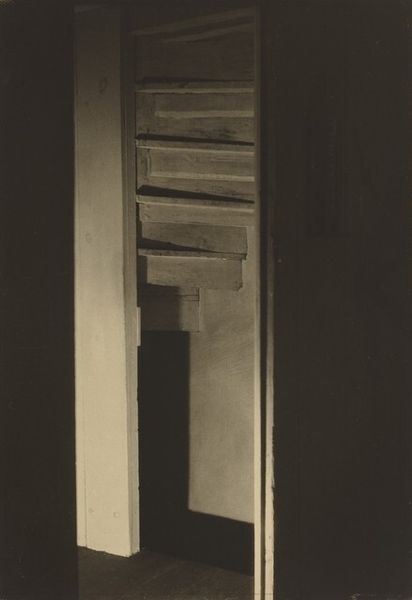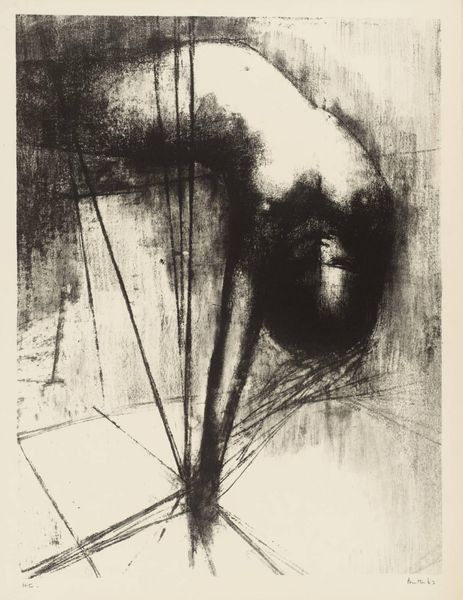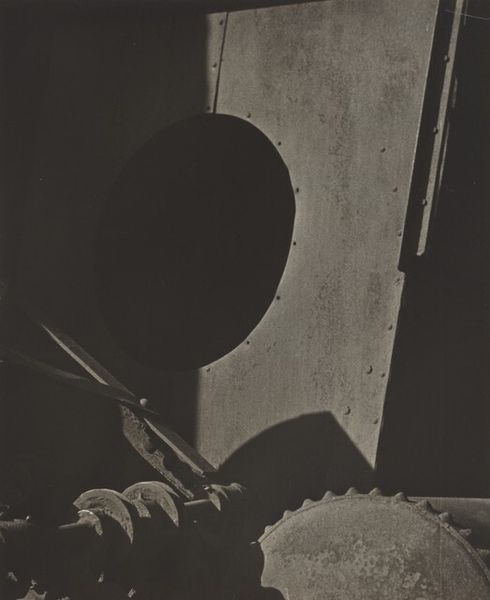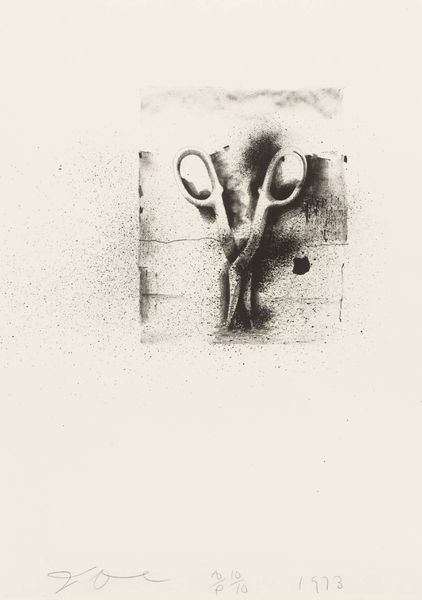
drawing, print, graphite
#
drawing
#
toned paper
# print
#
charcoal drawing
#
abstraction
#
graphite
#
monochrome
Dimensions: plate: 89.85 × 60.33 cm (35 3/8 × 23 3/4 in.) sheet: 105.09 × 74.93 cm (41 3/8 × 29 1/2 in.)
Copyright: National Gallery of Art: CC0 1.0
Curator: The atmosphere is so heavy, like a storm gathering just over the horizon. There's a vulnerability suggested by the isolated figure, and yet also a strange strength. Editor: This piece, titled "Moby Dick," is a print, drawing, made with graphite and charcoal on toned paper, dating from around 1974 by the artist David Freed. Curator: The title immediately frames it within a certain socio-political lens, doesn't it? Melville's novel itself a dense exploration of American identity, ambition, and the destructiveness of unchecked obsession. Given the time period, post-Vietnam, it almost screams about lost idealism. Editor: Exactly. But the abstraction pulls away from direct narrative, wouldn't you say? Freed was working in an era grappling with legacies of abstract expressionism and its challenge to the societal role of art. Notice how he plays with light and shadow. It's not merely illustrative but actively constructs the mood, drawing us into Ahab's psyche. Curator: The formal elements enhance the reading of obsession and alienation. The figure is dwarfed. The stark light, almost violently illuminating, becomes another isolating factor. We see it as if cast onto the wall of Plato’s Cave. And what are those geometric shapes below? There seems to be some indication of a boat too, within those angular forms, and maybe more triangular forms, like sails…It suggests the futility of trying to chart something fundamentally unknowable. Editor: Interesting point. You know, during the '70s, institutions were expanding their engagement with artists like Freed, broadening definitions and visibility for contemporary American art and how political narratives were embedded in it. This was not an easily accepted or digested work at the time for audiences or critics. It pushes the boundaries of conventional political commentary into more psychologically resonant territory. Curator: Perhaps what makes "Moby Dick" so effective is how it marries formal abstraction with complex themes related to the socio-cultural milieu of the artist. The individual's fraught relationship with nature, perhaps representative of power structures is still resonant for audiences today. Editor: Precisely. Freed manages to engage history while probing the depths of the human condition and still raising timely questions about contemporary society.
Comments
No comments
Be the first to comment and join the conversation on the ultimate creative platform.
